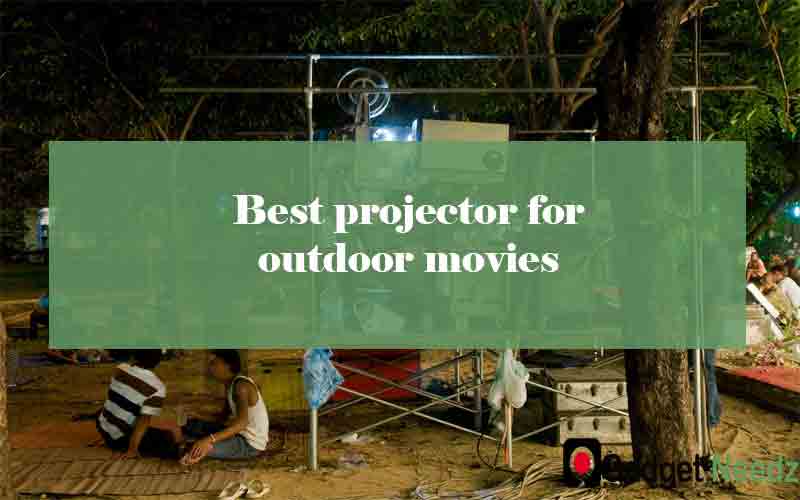Table of Contents
While projecting any content on the large screen, you can’t always expect to have a correctly projected image on the screen. Whether you go for a large screen, small screen, or improvise with a white wall, keystoning is a common problem that you will often come across. It mainly occurs when the projector is not appropriately aligned to the screen, or the screen doesn’t have a flat surface.
Keystone not only ruins the whole visual experience but also leads to trapezoidal visual orientation. To correct this image distortion issue, you need to utilize the projector keystone correction that is offered in every model.
Previously projector didn’t have any useful features or solutions to correct keystone, but with gradual demand, manufacturers started offering effective solutions. Nowadays, almost every projector gets keystone correction. However, the degree of keystone correction varies from model to model.
What is Keystone Correction?
Keystone correction is a highly effective method of correcting all the image distortion caused by the keystoning. In general, lenses in every projector are designed to project the image slightly vertically upward so that viewers can properly view the screen without coming in the line of sight.
So when the lens projects the image and if it isn’t perpendicular to the screen, then it causes a non-square image.
In many situations, projectors are placed at a particular place, and they can’t be moved, so in those situations, projector keystone correction comes into play.
During the setup, you can avert any distortion by using the keystone correction feature that allows you to adjust the lens to get a perfectly squared image. It is a highly useful and easy feature that almost every user can use.
The degree of keystone correction is never fixed, and different models come with different degrees of correction. Most of the high-end models come with higher degrees, while the low-end models are limited to fewer degrees for correction. However, some budget projectors are now getting advanced four corner keystone correction, which is making correction much smoother.
Keystone correction features come in two types where the popular one is manual keystone correction, while the other is digital keystone correction. In terms of direction, keystone correction offers both vertical and horizontal options, but the vertical keystone is the most popular option in most units.
However, some new units are also coming up with horizontal options so that users have the complete freedom to rectify all keystoning effects.
Methods Of Keystone Correction
Manual Keystone Correction
Manual keystone correction is probably the most used and popular method of rectifying the keystoning issue from a projector. By the name, you can understand that the keystone is corrected using a manual process where you will have to adjust the lens physically.
By adjusting the lens, it allows the projector to shoot an image slightly higher or lower than it would be if it were placed on a leveled area.
While manually adjusting the lens, you have to fiddle a lot with the position so that you can get a properly squared image on the screen. The biggest drawback of manual keystone correction is that you need to maintain a considerable gap between the screen and projector to get a properly aligned visual output.
So while using a short throw or ultra-short projector, you might face difficulty with manual keystone correction. It is widely used by users to rectify all the deformation caused by keystoning, but you can’t eliminate horizontal keystoning.
There are limitations related to manual keystone correction, but it is quite effective, especially for users who aren’t technically sound.
Digital Keystone Correction
Digital keystone correction is an advanced correction method that allows users to overcome all the limitations of manual keystone correction. Even though it is not popular and available like manual methods, it is gradually getting popular among users.
Modern projectors incorporating DLP, LCD, or LCoS are using this method where they are able to digitally modify and scale the image so that it can fit the screen properly. Basically, the digital method uses an image altering algorithm, and it assists the projector in correcting or modifying the image before it reaches the lens.
The adjustment in both vertical and horizontal angles in the digital method assists the user to place the projector anywhere they want without worrying about image alignment issues.
Not only is it convenient but also quick. However, none of the methods are perfect, and it too has some drawbacks. The major drawback is the loss of some detailing, and it arises to squaring of the image by narrowing the broader side of the image.
The scaling process causes some loss in the overall details of the content, and sometimes it leads to unwanted visual output. Another issue that often arises due to digital keystone correction is the significant decrease of maximum lumen output.
The issue of loss of lumens mainly occurs due to the scaling of the image, which is actually smaller than the main resolution of the output. Overall it gets the job done, and you will hardly find any significant difference that will hinder your viewing experience.
Does Keystone Correction Reduce Resolution?
Keystone correction is a highly effective method of rectifying but like vertical shift and digital zoom; it also leaves some side effects on the visual quality.
Like in digital zoom, you get a blurred visual output while staying in a zoomed-in state. Similarly, correcting keystoning issues causes the content to lose its quality. So we can say that keystone correction definitely causes a reduction in resolution and overall visual experience.
You should opt for keystone correction only when you have exhausted all your options of adjusting the keystone effect by physically moving the projector.
When you opt for keystone correction, the adjustment in the image leads to the shrinking of pixel count both horizontally and vertically. The shrinking of pixels comes into play so that the projector can show a squared output. So you automatically get a lower resolution and often a loss of sharpness in the overall output.
As non-specialists who aren’t much aware of the differences between 4K and full HD, they won’t be able to find any degradation in the resolution. However, if you are someone who is used to 4K or full HD visuals on a daily basis, you find the difference in resolution as soon as you opt for keystone correction.
According to experts, you lose more detail when you go for lower resolution. So when you watch contents in 4K that have a considerable number of pixels to work with, there are fewer chances of resolution degradation. However, the degree of loss in resolution also depends upon the screen size you are achieving and the throw distance you are maintaining.
How Severe Is The Resolution Loss From Keystoning?
The loss of resolution from keystoning depends upon a lot of factors, but it mostly depends upon the resolution you are using. Higher the resolution of the image, lesser will be the loss of resolution due to keystoning. So you will find a significant loss in resolution if you opt for keystoning in HD resolution than 4K UHD.
When you go for digital keystoning, the process causes a significant loss in pixels for adjustments of the image. Various reports suggest that some of the users have faced almost 50% loss in the visible resolution when they have opted for digital keystone. So if you are watching content on 4K or Full HD and you go for extensive keystone correction, then you will end up too full HD from 4K and HD from full HD quality.
However, if you have some content on 480p resolution or lower, then it gets almost unwatchable after you go for keystoning rectification. The severity in the loss of pixel and resolution from keystone correction also depends upon the eye of the beholder.
Most importantly, if you are close to the screen, then the degradation in quality will be much more visible to you than a person who is maintaining a large viewing distance.
Some experts also say it isn’t always true that half of the pixel is lost during keystone correction. When you go for extreme correction, then only lose a significant amount of pixels and ultimately resolution; otherwise, there isn’t much loss in resolution.
However, there is a limitation in the keystone correction, so you can’t expect a tremendous loss from correction.
The loss in resolution isn’t severe when you go for slight keystone correction, and the MTF and CR often improve during lower degrees of correction.
MF or modulation transfer function is considered as a threshold to measure the sharpness of the image. CR, on the other hand, is the contrast ratio, and it improves by a small margin when you opt for a slight adjustment in the correction.
The side effects from keystone correction and improvement also depend upon the lens’s quality of your projector as well as its capabilities. However, when you do a 1:1 mapping of pixels of the keystone corrected image, you will find a major degradation in the quality.
The severity of the loss of resolution due to keystoning also depends upon the perspective of the users. When you are used to 4K contents, you might not face a massive loss in resolution, but the quality or frame drop is visible in the naked eye even from a proper distance.
The loss of resolution and details hikes up when you use lens shift along with keystone correction. When you use two digital correction techniques together, it degrades the overall quality by a large margin and leads to a poor visual experience.
Not only do you get grainy visual output, but you will find a lot of distortion in the image. Sometimes overusing digital correction techniques often brings up jagged lines on the screen and also artifacts.
Conclusion
In the end, we can say, projector keystone correction should be your last resort to do any kind of adjustment. It is like a necessary evil that you can’t avoid when you can’t get an adequately squared image on the big screen. You should opt for manual adjustment of placement of projector before planning for keystone correction.
You can tilt the projector and screen or place them on a flat surface rather than an option for digital adjustment techniques.
If you are quite particular about the resolution of your projector, then you should always try manual adjustment rather than going for keystone correction.
However, for users who just want to have an excellent visual experience, then for them, the degradation in resolution and quality won’t be much visible.
A keystone correction within the range of 5 clicks won’t make much difference, and as an average user, it will still look high quality. Even though it drops the quality of the image but it is a necessary feature that you can’t afford to discard.
Related Article :








